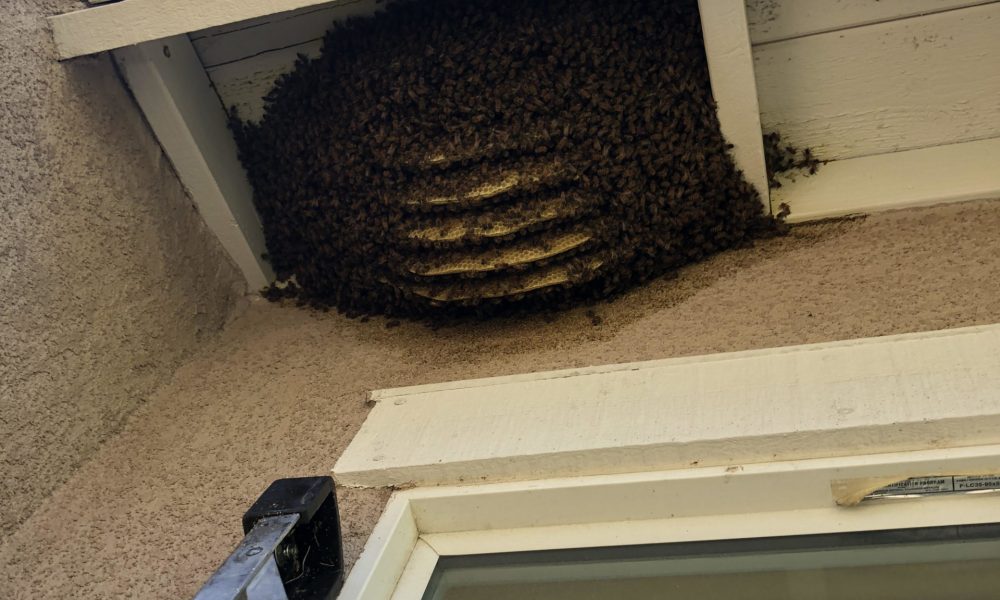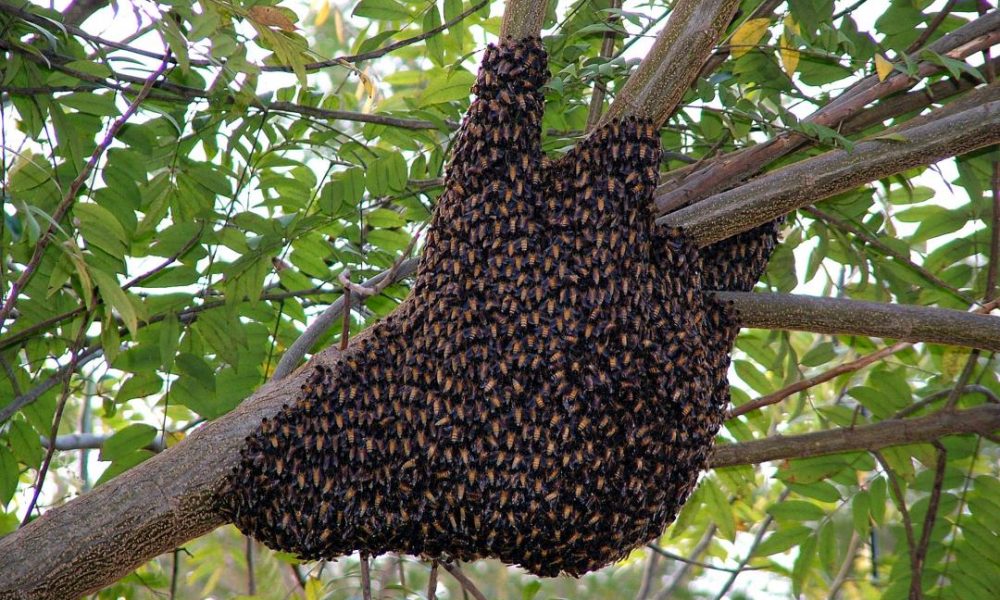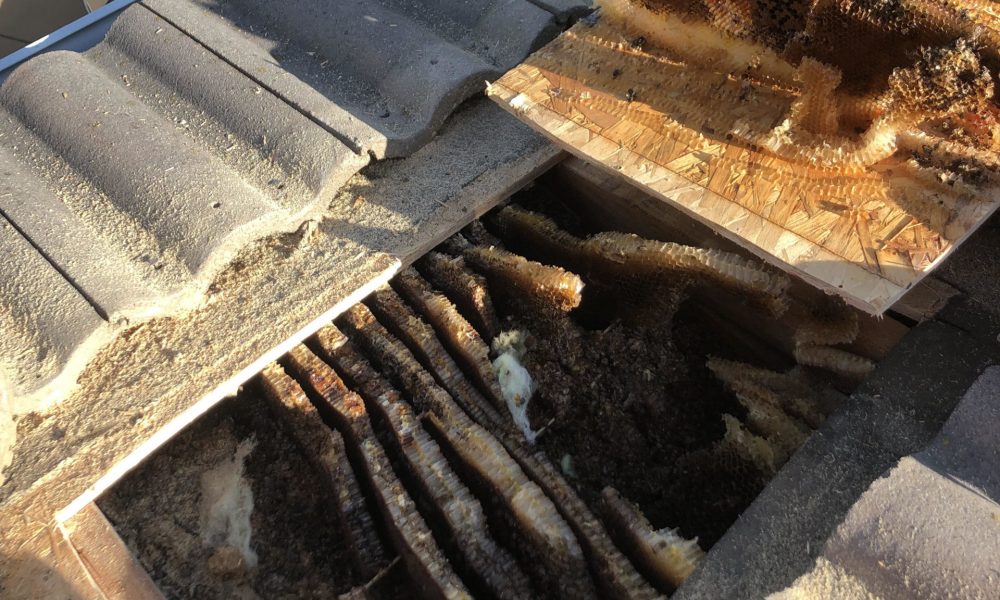The Most Common Questions
If a beehive is left behind, the smell of it will attract bees back to the area for years to come. If a typical size beehive is abandoned and is located in an attic or wall, once the bees have departed, the honey will completely melt out of the comb and will destroy drywall, stucco, siding, paint, etc. The abandoned beehive will then attract other pests such as ants and rodents.
We always try to remove bee swarms live. The following list are attributes of a bee problem that allow us to remove the bees in a humane way.
1. The bees are not aggressive and in swarm or early hive formation.
2. The bees are easily accessible and are clustered out in the open and not inside a structure.
3. We are able to place them with a beekeeper in our Network.
We perform exceptional bee removal repairs. With over 20 years of construction experience, by the time we are done with any structural repairs from your bee removal, you wouldn’t even know you had a beehive.
The cost of bee removal varies depending upon a number of factors. There are three main factors that can effect the cost of a job.
1. The first is the length of time the problem has been going on. If you have a swarm it is less expensive to resolve than if you have a hive. A swarm is a collection of bees that has just landed and is looking to build a hive. A fully established hive can be built in only a couple weeks, so fixing the problem quickly (before the swarm has built a hive) is much less expensive than if a hive has already been established.
2. The second factor that influences the price of a job is where the bees or hive is located. Is it in a tree at eye level that is easy to get to? Or is it 25 feet up in a palm tree? Does it require a ladder? Is it on a hillside or up a steep slope? Do you need to crawl under a structure to get to it? Do you need a boom lift or heavy equipment to reach it? All of these factors dictate the difficulty and price of the job.
3. The third main factor is what materials and tools will be needed to remove the hive? Is the hive in a 3nd story wood shingle roof or a single story Spanish tile roof? Are the bees inside an irrigation box in the ground where the lid can be lifted easily? Or are they inside a concrete wall that needs to be demolished in order to get to the hive? Are the bees in a stucco wall, a wood wall, or a type of wall that has special masonry? All of these examples can effect the cost of the hive removal.
As soon as you spray bees with chemical pesticides it kills the honeybees but the honey and honey comb are left behind for rodents and pests to feed on and contaminate the area with their droppings. Another reason is that more bees can often occupy the beehive and you have another live beehive on your hands. That’s why it’s critical that the entire beehive and honeycomb are removed from your property.
In the case of a Swarm, usually YES. A swarm of bees may stop to rest on just about anything during the migratory process and leave between 1 and 72 hours later. The swarming season occurs mostly during Spring and Fall, but it can occur at other times of the year as well. Established Colonies will NOT leave once they have set up housekeeping except in extenuating circumstances. Bees may choose various hollow cavities to set up colonies such as your roof, eaves, wall voids, water meter boxes, even a BBQ grill or a birdhouse. It only takes bees about 72 hours to start producing honey and combs once they move in.
Bees need water just like we do. They will gather at swimming pools, ponds, and water coolers in order to find it. Water-collecting bees are docile just as when they are foraging for pollen and nectar. Bees will also communicate to their colony where the best sources of water are so when they find a good spot they are likely to return repeatedly. The only way to rid your property of foraging bees is to take away the water or food source they are coming to. They will become discouraged and go elsewhere. This can be fairly easy with fountains and birdbaths, but not so easily done with an entire pool.
Bees are only dangerous when they are defending their colony: nest, honey and brood. They are not dangerous when foraging for pollen, collecting water, nor typically when swarming. This means that it is important to check the area around your home for wild colonies of bees, as they can be easily disturbed and will defend themselves. If you or your pets have been stung by bees and believe you are having an allergic reaction consult a health care professional immediately.
Unfortunately it can. Bees are very resourceful and can find the trickiest places to build their hives. If they are in your wall space or the crawl space in your house, we will need to gain access by cutting into the structure to effectively remove all remnants of the hive.
You can’t! It requires DNA testing and elaborate measurement tests in order to distinguish the two. The Africanized bee has hybridized with the more friendly European bees that beekeepers brought here first. These hybrids exhibit characteristics of both, and the behavior of a hive can drastically change without warning. Their behavior is NOT an accurate tool to determine whether they are Africanized! You should always just give all bees you encounter the respect you’d give any wild creature.
If you have any other questions call us at(626) 336-1373 or just click on the button below






